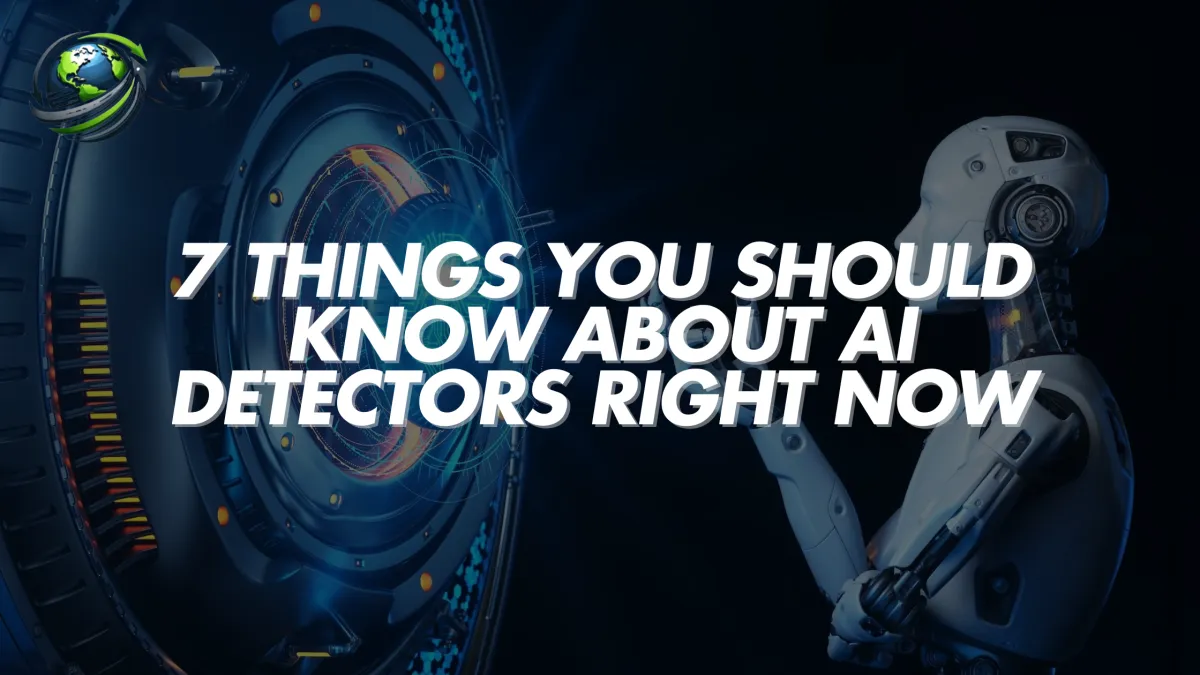
7 Things You Should Know About AI
7 Things You Should Know About AI Detectors Right Now
A few years ago, no one cared if a blog post was written by a human or a machine. But now? AI-generated content, deep fakes, and even synthetic voices are flooding our feeds. And with all that noise, we’ve entered a new digital arms race: detecting what’s real, and what’s not. Whether you're in marketing, health tech, or national security, artificial intelligence detectors are becoming essential tools. But here’s the kicker: not all AI detectors are created equal.
This blog breaks down the seven must-know truths about AI detectors: what works, what doesn’t, and how to stay a step ahead in this rapidly evolving space.
1. Not All AI Detectors Are Built for the Same Job
When someone says “AI detector,” the first thought is usually about catching ChatGPT-generated content. But these tools go way beyond blog policing. Some are tuned for deep fake detection in video surveillance. Others monitor sensor data to flag anomalies in health diagnostics like cancer detection.
Pro Insight: AI detectors are hyper-specialized. Using the wrong type for your use case? That’s like bringing a calculator to a chess match.
Take 60 seconds and ask: what exactly do you want to detect: text, images, video, or biosignals?
2. Accuracy Is a Moving Target
Here’s the uncomfortable truth: accuracy rates vary wildly across different AI detection tools. One week a tool boasts 95% accuracy, and the next, it’s struggling to detect GPT-4 outputs. Why? Because the models they’re trying to detect are evolving fast, and often cloaked intentionally.
Watch Out: Accuracy isn’t just about the number, it’s about the dataset the tool was trained on. Garbage in, garbage out.
If accuracy matters (and it should), always ask: what was this tool trained on?
3. The Most Accurate Free AI Detector (Right Now)
At the time of writing, GPTZero remains the go-to free tool for detecting AI-written text with reasonable confidence. It analyzes factors like perplexity and burstiness to determine human vs. machine origins.
Pro Tip: Don’t rely on just one tool. Cross-reference results from multiple detectors like ZeroGPT, Winston AI, and OpenAI’s own classifier.
Run your last blog post through two detectors, just to see what pops up.
4. AI Detection Isn’t Just for Text Anymore
In sectors like law enforcement and healthcare, AI detection is increasingly focused on non-text data. Think facial mapping for deep fake surveillance, voice authentication, or detecting tampered medical imaging.
Did You Know? Some tools now pair machine learning with sensor tech to identify physiological changes for fraud or illness detection.
Ask your tech team: are we monitoring the right formats, text, images, audio, and beyond?
5. Bypassing Detectors Is Shockingly Easy
There are now entire forums and YouTube channels dedicated to how to avoid AI detectors. From paraphrasing tools to prompt engineering, evading detection is an actual craft and AI tools are getting better at it, too.
Reality Check: If you think AI detection is a one-time setup, think again. It's an arms race.
Google "bypass GPT detectors" and prepare to be unsettled.
6. Detectors Use More Than Just Keywords
Contrary to popular belief, AI detectors aren’t scanning for keywords like “thus” or “however.” They’re looking at language patterns, syntax structures, and even semantic predictability.
Quick Example: AI text often has low burstiness, meaning it reads evenly and lacks the spikes in unpredictability found in human writing.
Try this: read a paragraph aloud. Does it sound flat and robotic? You might be looking at AI content.
7. The Best AI Detection Tool Is Contextual Awareness
At the end of the day, no tool is perfect. The smartest move is to combine tech with human oversight. Whether you're reviewing user-generated content or vetting research data, trained eyes still matter.
Big Idea: The best detector is a smart human using a smart tool.
Assign one team member to stay up-to-date on AI detection trends. Seriously, it’s worth it.
Conclusion
AI detectors are no longer optional, they’re operational. Whether you're protecting your brand from deep fakes or ensuring medical data integrity, these tools are shaping how we trust and verify information. But don’t get complacent. The tech is evolving daily, and what works today might not tomorrow.
Want to stay sharp? Start by asking better questions about tools, accuracy, and context. The more you understand how AI detection really works, the better you can adapt.
Want to scale smarter without the hiring hassle? Explore how our team plugs in exactly where you need it.
https://cynergists.shop or https://cynergists.com
